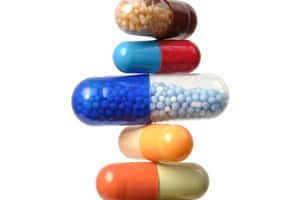
A European study found gastrointestinal (GI) events continue to be common among patients with rheumatic diseases treated with nonsteroidal anti-inflammatory drugs (NSAIDs). The incidence rate of any GI adverse event was 19 (95% CI 17.3-20.8) per 100 person-years during 6 months’ follow-up of patients with osteoarthritis, rheumatoid arthritis (RA), or ankylosing spondylitis, according to Dr. […]

Gastrointestinal Events Common in NSAID Use for Arthritis
A European study found gastrointestinal (GI) events continue to be common among patients with rheumatic diseases treated with nonsteroidal anti-inflammatory drugs (NSAIDs).
The incidence rate of any GI adverse event was 19 (95% CI 17.3-20.8) per 100 person-years during 6 months’ follow-up of patients with osteoarthritis, rheumatoid arthritis (RA), or ankylosing spondylitis, according to Dr. Angel Lanas of the University of Zaragoza School of Medicine in Spain, MedPage Today reports.
For uncomplicated GI events such as dyspepsia, nausea, and vomiting, the rate was 18.5 (95% CI 17-20) per 100 person-years, and for complicated events such as hemorrhage or perforated ulcers the rate was 0.7 (95% CI 0.4-1.1) per 100. The research was published in the Annals of the Rheumatic Diseases. “The efficacy of is well documented; however, the clinical benefits of NSAIDs may be offset by an increased risk of dyspepsia, other abdominal symptoms, cardiovascular events (e.g., myocardial infarction, stroke, heart failure) and serious gastrointestinal complications such as peptic ulcer,” Lanas and colleagues wrote. The GI events linked with NSAID treatment can occur without warning, according to MedPage Today.
The researchers say previous clinical trials may not reflect actual risks because they typically excluded patients at risk for GI events. The researchers conducted a study known as EVIDENCE, enrolling 4,144 patients from 363 centers in 12 countries. Every participant had at least one GI risk factor, including age (60 or older), a history of peptic ulcer, or concomitant medications such as low-dose aspirin, anticoagulants, corticosteroids, or selective serotonin reuptake inhibitors (SSRIs). One in four patients had two risk factors, and one in ten had three or more and were classified as high risk, MedPage Today reports.
The study’s primary endpoint was the incidence of symptomatic uncomplicated or complicated GI events of both the upper and lower GI tract, while secondary endpoints included the incidence of GI events for patients receiving or not receiving proton pump inhibitors (PPI) and the incidence of cardiovascular and other events. The reason for their NSAID use was osteoarthritis in 85 percent, rheumatoid arthritis in 11 percent, ankylosing spondylitis in 3 percent, and a combination of conditions in 1 percent. The most common types of NSAIDs used were diclofenac (29%), ibuprofen (19%,) and naproxen (10%).


